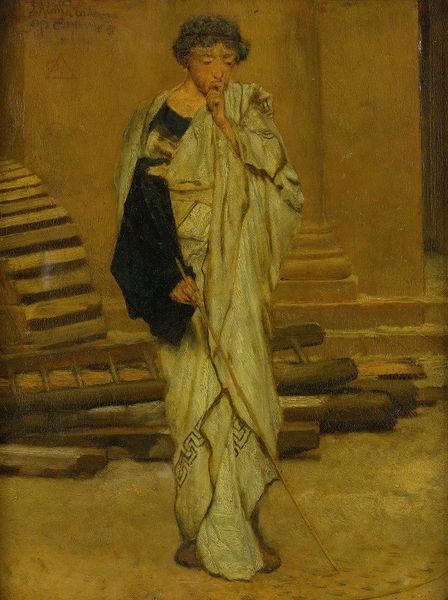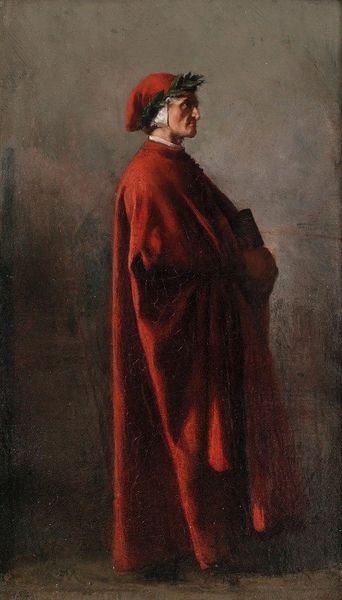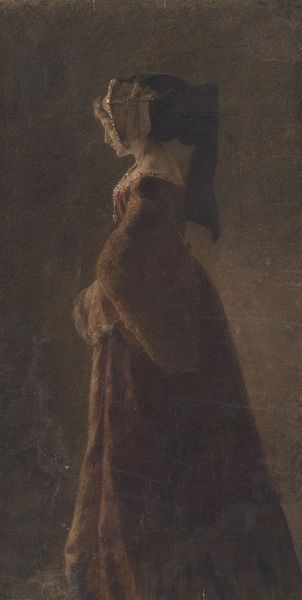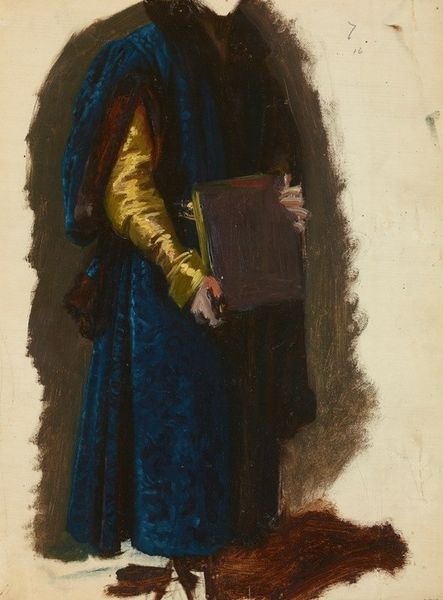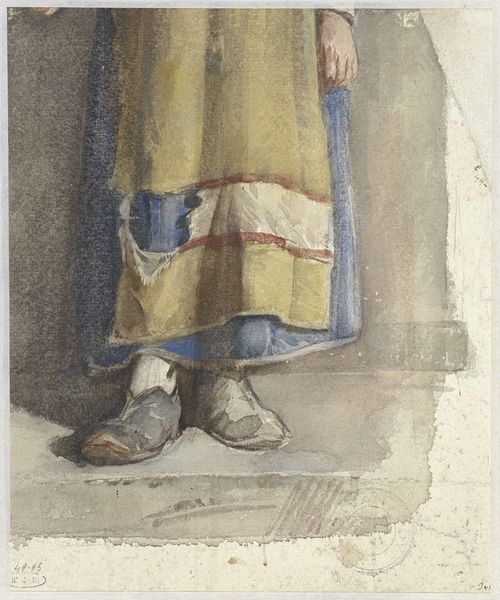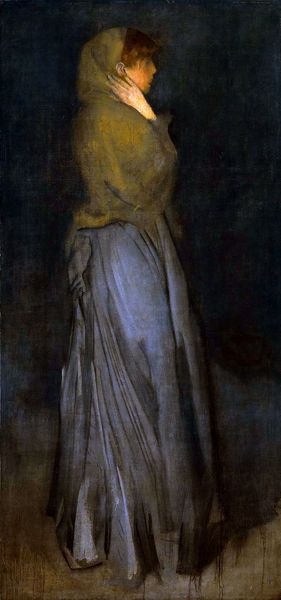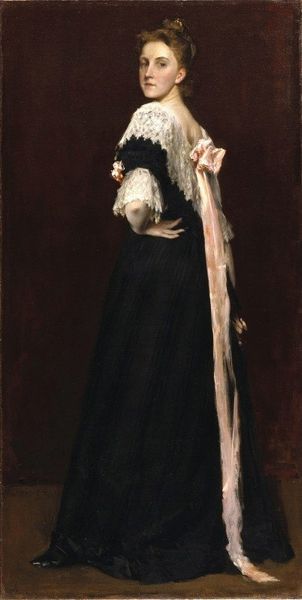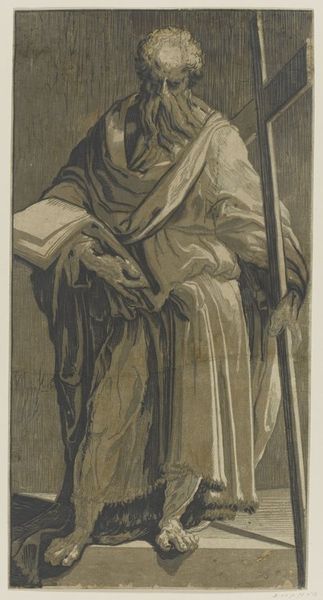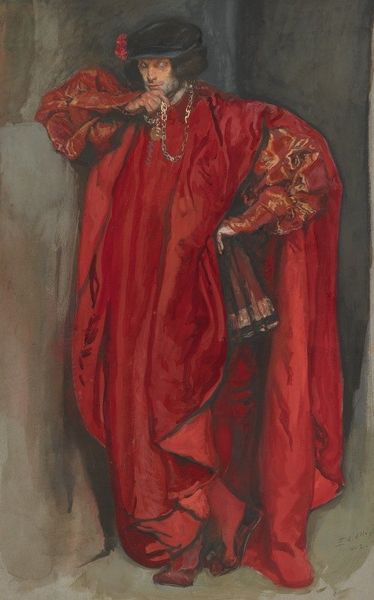
painting, oil-paint
#
portrait
#
figurative
#
painting
#
oil-paint
#
oil painting
#
romanticism
#
history-painting
#
academic-art
#
portrait art
Copyright: Public Domain: Artvee
Editor: This is "Etude de Mérovingien, histoire d’Hilpérik" by Jean-Paul Laurens, an oil painting. It evokes a sense of quiet contemplation. The king seems burdened. How do you interpret this work? Curator: The cultural memory embedded in images is profound. Laurens, painting in the late 19th century, reaches back to the Merovingian dynasty. Notice how Hilperik, lost in thought, embodies the weight of leadership, not just personal but also historical. What specific elements suggest this burden to you? Editor: The muted colors and his pose; the way his hand is pressed against his face screams inner turmoil. Curator: Precisely. That gesture resonates across centuries. Consider the symbolic language: the crown, usually a symbol of power, here feels like a heavy weight. Laurens is drawing upon a tradition of portraying rulers, inviting us to contemplate not just authority but also its psychological cost. This image suggests leadership can isolate. Do you agree? Editor: That’s a great point. It makes me wonder if Laurens felt burdened by history in his time too. Curator: Absolutely! Visual symbols echo across generations. It's not just Hilperik’s story being told, but also a timeless reflection on leadership itself, and the expectations and realities linked to symbols of authority and position. It links the past to the present in a continuous cultural narrative. Editor: It’s amazing how much history and meaning can be packed into one portrait. I’ll definitely look at historical paintings differently now. Curator: The layering of historical narrative, individual psychology, and enduring symbolism is what makes such artworks truly captivating and deeply resonant.
Comments
No comments
Be the first to comment and join the conversation on the ultimate creative platform.
